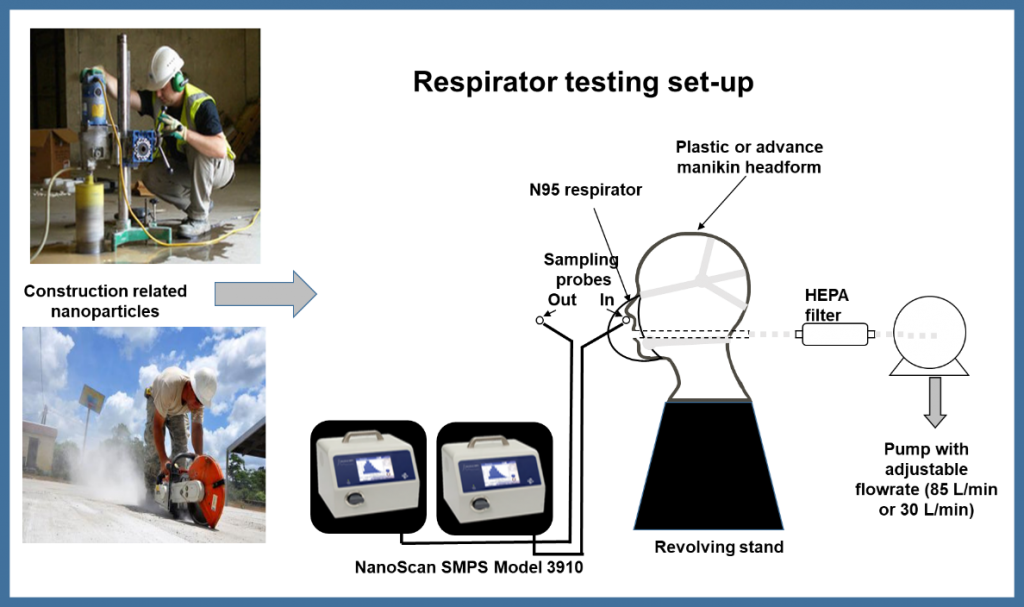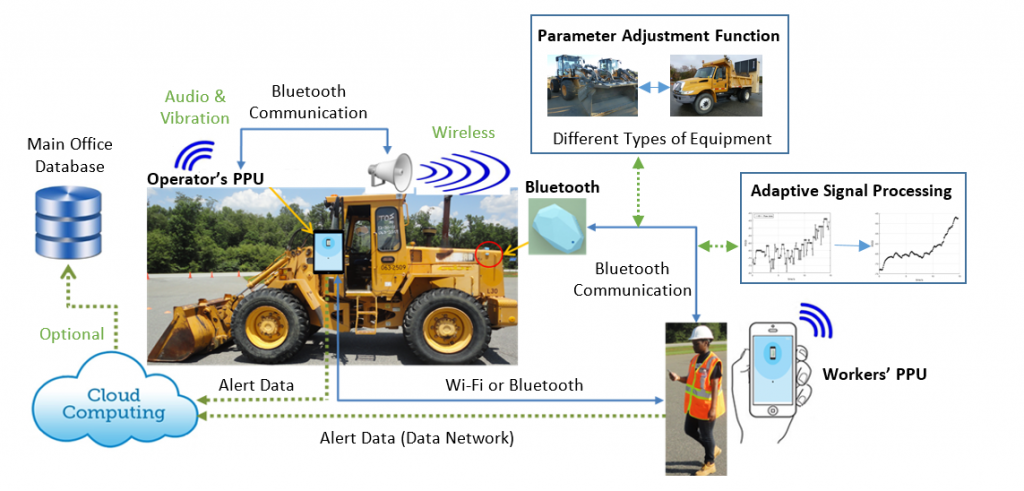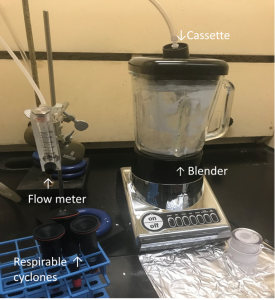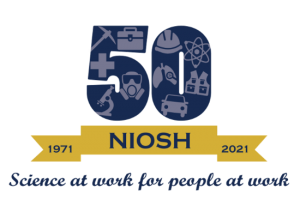Using CPWR’s Small Study Program to Explore Emerging and Persistent Health and Safety Hazards and Innovative Solutions in the Construction Industry
Posted on by
Construction is a complex and high hazard industry. Every day, millions of construction workers are employed on worksites across the United States. Each worksite and type of construction (e.g., residential, highway) involves variables including type of work performed (e.g., electrical, plumbing), number of employers and employees, project designs, materials and products used, and working conditions. CPWR-The Center for Construction Research and Training, which serves as the NIOSH-funded National Center for Construction Safety and Health Research and Translation, brings together researchers and industry stakeholders to conduct research on construction health and safety hazards resulting from these working conditions and ways to mitigate the risks.
In 1993, CPWR established the Small Study Program to conduct and pilot hypothesis-generating research and attract new investigators into the field of construction health and safety research. This innovative program continues to provide extramural researchers with seed money of up to $30,000 and the flexibility to initiate short-term studies (up to 12 months). This research can investigate and assess the potential risks from emerging hazards and changes taking place in the construction industry, explore new approaches for addressing persistent hazards, and create and test promising methods and interventions to improve construction worker health and safety. Many major construction research projects began with a CPWR-funded small study.
Small Studies Address Industry Priorities
The Small Study Program funds studies that respond to industry-driven priorities, including NIOSH strategic goals, the National Occupational Research Agenda (NORA) for Construction, and more recently the 2018 NIOSH Construction Program Expert Panel Report recommendations. To date, approximately $3.75 million has been awarded to fund 127 small studies. Results are communicated to research scientists and industry stakeholders through published reports posted on CPWR’s Small Study Program webpages, peer reviewed journal articles (more than 60% of investigators have published articles on their findings), researchers’ dissemination outlets, and products and outreach activities from CPWR’s research to practice (r2p) and communications programs.
Recent studies have addressed a broad range of hazards and potential solutions including prevention through design (PtD), workforce sustainability, safety training, ergonomics, the effects of policy on safety, r2p approaches, and other promising interventions to prevent occupational illnesses and injuries. These small studies generate stand-alone findings, innovative approaches, and pilot data which not only contribute to the body of scientific research on construction health and safety, but also provide new insights into emerging hazards, new technologies, and potential solutions, and can identify future research needs. The following examples illustrate the success of the Small Study Program.
Providing Insights into an Emerging Hazard
New materials, products, and work practices are often introduced on construction sites without being thoroughly vetted for health and safety risks. Many are potential emerging hazards that create an urgent need for information on the potential risks and protective measures. For example, a small study, A pilot study on nanoparticle levels and field evaluation of N95 filtering facepiece respirators on construction sites,[1], collected exposure data for several common dust-generating construction tasks and evaluated the real-time filtration efficiency of N95 respirators against nano-sized particles – information critical for protecting workers and preventing respiratory illnesses (Figure 1).

Exploring Use of New Technologies to Address Persistent Hazards
Technological advancements are rapidly being introduced to the industry that may benefit construction worker health and safety. The following are examples of small studies that used new technologies to address two persistent hazards facing the industry – falls from heights and struck-by incidents caused by collisions between heavy equipment and workers.
In the first small study example, Using Unmanned Aerial Systems for Automated Fall Hazard Monitoring in High-rise Construction Projects,[3] drones were used to collect true-color images and then the images were combined with novel “computer vision techniques” to create an automated fall hazard detection and monitoring system to help employers increase the frequency of safety inspections in hard-to-reach areas and improve safety performance (Figure 2).

The second small study example, Improving work zone safety utilizing a new mobile proximity sensing technology,[5] involved designing and testing a proximity sensing and alert system using Bluetooth Low Energy (BLE) technology to monitor the location and direction of moving equipment and alert both equipment operators and workers on the ground to collision hazards (Figure 3). The new system was found to reliably alert operators and workers, even when the equipment approached the worker at relatively high speeds (10 mph), and study participants found it practical and easy to use. These promising results led to additional funding and industry support for continued research.

Testing New Methods to Assess Exposures

Helping Industry Stakeholders Make Safe Choices
In addition to providing the scientific community with new information on hazards, solutions, methods and data, some small study findings can immediately help construction workers and employers make safer choices.
In the study, Fall Protection Resource for New Home Construction,[9] for example, the researchers developed a user-friendly website to help residential construction contractors, most of whom are very small (<20 employees), understand the many fall protection options commercially available and select the best ones for their operations. The study findings and output have contributed to more recent fall prevention materials and a new online resource for small employers developed by the NORA Construction Sector Council Falls Work Group.
How Can Researchers Take Advantage of Small Study Funding Opportunities?
The Small Study Program provides funding of up to $30,000 for short-term extramural studies (up to 12 months). A study may be proposed at any time by completing the application process. The first step is to submit a 4-page letter of intent (LOI) that summarizes the proposed study, including objectives, methods, and a dissemination plan. Full details on how to apply can be found in the Small Study Guidelines.
Currently, priority is being given to LOIs aimed at:
- Finding innovative approaches to reduce the spread of COVID-19 in the construction industry through ventilation, distancing, and respirators
- Reaching high risk populations: small employers, vulnerable workers, residential and light commercial construction – CPWR is particularly interested in studies that plan to work with and/or target small employers (<20 employees) in the U.S. construction industry
- Getting best practices adopted – research to practice
- Addressing emerging issues and exploring new technologies
- Improving safety culture and safety climate
- Exploring innovative or new directions in construction sciences
- Evaluating promising research translation products
- Disseminating good practices to small employers
Please contact Patricia Quinn, pquinn@cpwr.com, if you have questions about the application process, priorities, or small studies completed or currently underway.
CPWR is a nonprofit research institution with an organizational mission to improve working conditions in the U.S. construction industry. CPWR and its network of research consortium partners investigate the causes of illnesses, injuries and fatalities among U.S. construction workers and test methods and procedures for reducing or eliminating the hazards. The Small Study Program is funded as part of CPWR’s cooperative agreement with the National Institute for Occupational Safety and Health (CDC/NIOSH). CPWR has served as NIOSH’s extramurally funded National Center for Construction Safety and Health Research and Translation since its inception and has partnered with NIOSH in the construction safety and health research initiative since its beginnings in 1990. For more information on NIOSH extramural research and training, click here.
Chris Cain, CIH, is the executive director at CPWR – The Center for Construction Research and Training.
Patricia Quinn is the program administrator for the CPWR Small Study Program.
Richard Rinehart, ScD., is the Deputy Director at CPWR.
Pete Stafford is former Executive Director of CPWR and currently serves as a Senior Advisor and Chair of CPWR’s Technical Advisory Board.
Eileen P. Betit is the former Research to Practice Director for CPWR-The Center for Construction Research and Training. Since retiring in December 2020, she has continued to serve as a Technical Advisor to the r2p program.

This blog is part of a series for the NIOSH 50th Anniversary. Stay up to date on how we’re celebrating NIOSH’s 50th Anniversary on our website.
References
[1] Adhikari, A., Rashidi, A., Mirta, A., A pilot study on nanoparticle levels and field evaluation of N95 filtering facepiece respirators on construction sites, Georgia Southern University, CPWR Small Study Final Report, April 2018.
[2] Ibid, page 8.
[3] Gheisari, M., Esmaelli, B., Kosecka, J., Rashidi, A., Using Unmanned Aerial Systems for Automated Fall Hazard Monitoring in High-rise Construction Projects, University of Florida, George Mason University, University of Utah, CPWR Small Study Final Report, June 2020.
[4] Ibid, page 6.
[5] Cho, Y., Yang, X., Park, J., Improving work zone safety utilizing a new mobile proximity sensing technology, Georgia Institute of Technology School of Civil and Environmental Engineering, CPWR Small Study Final Report, July 2017.
[6] Ibid, page 3.
[7] Harper, M., Wu, C., Chien, C., Application of end-of-shift respirable crystalline silica monitoring to construction, University of Florida Department of Environmental Engineering Sciences, CPWR Small Study Final Report, May 2020.
[8] Ibid, page 3.
[9] Kaskutas, V., Fall Protection Resource for New Home Construction, Washington University in St. Louis, CPWR Small Study Final Report, September 2014.
Posted on by

